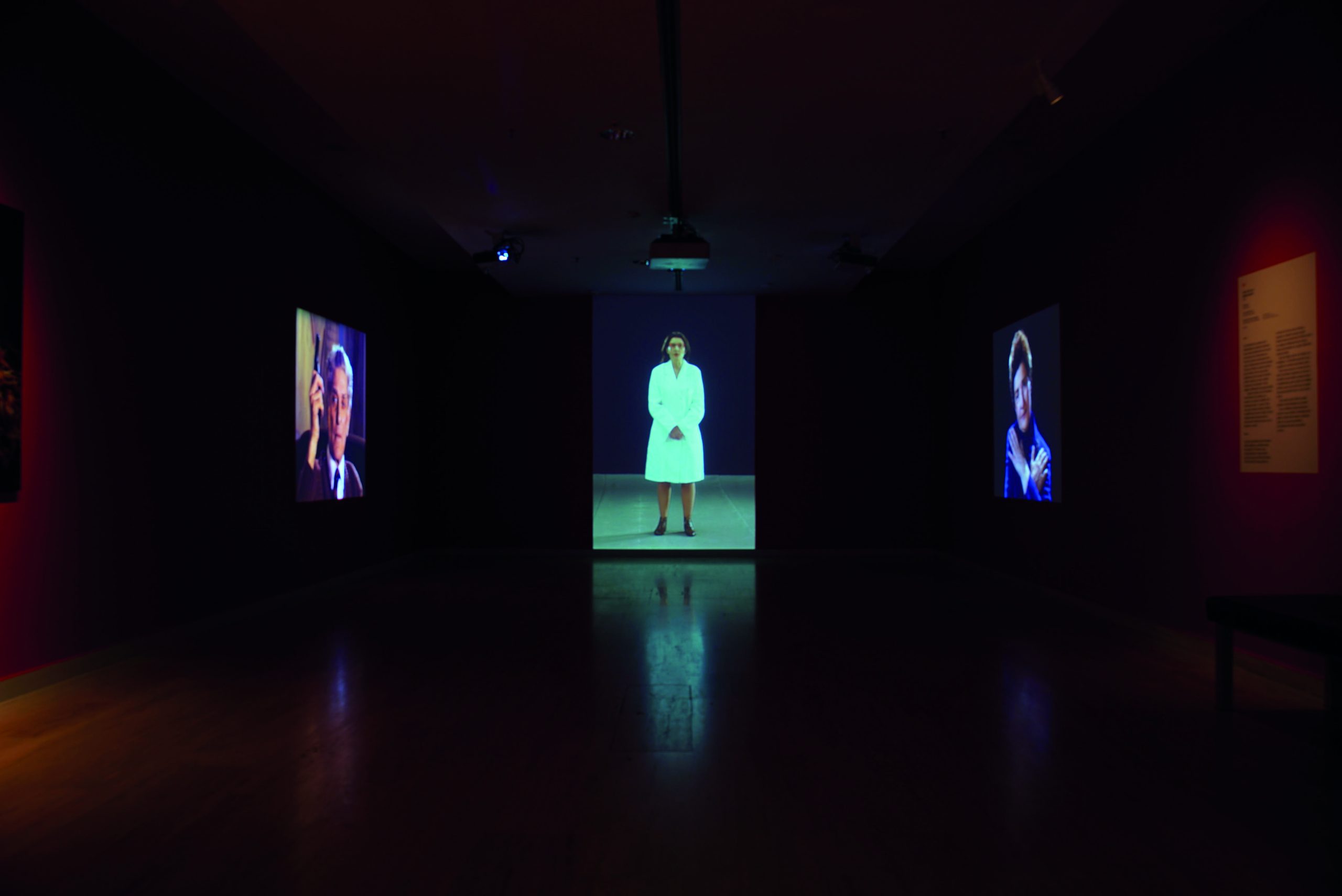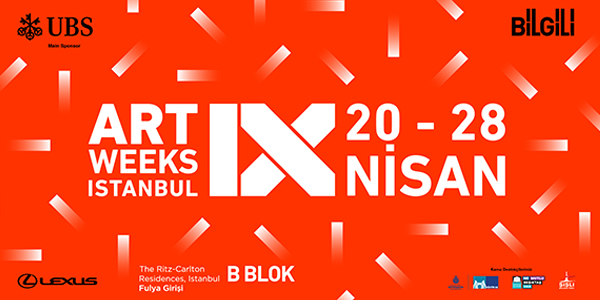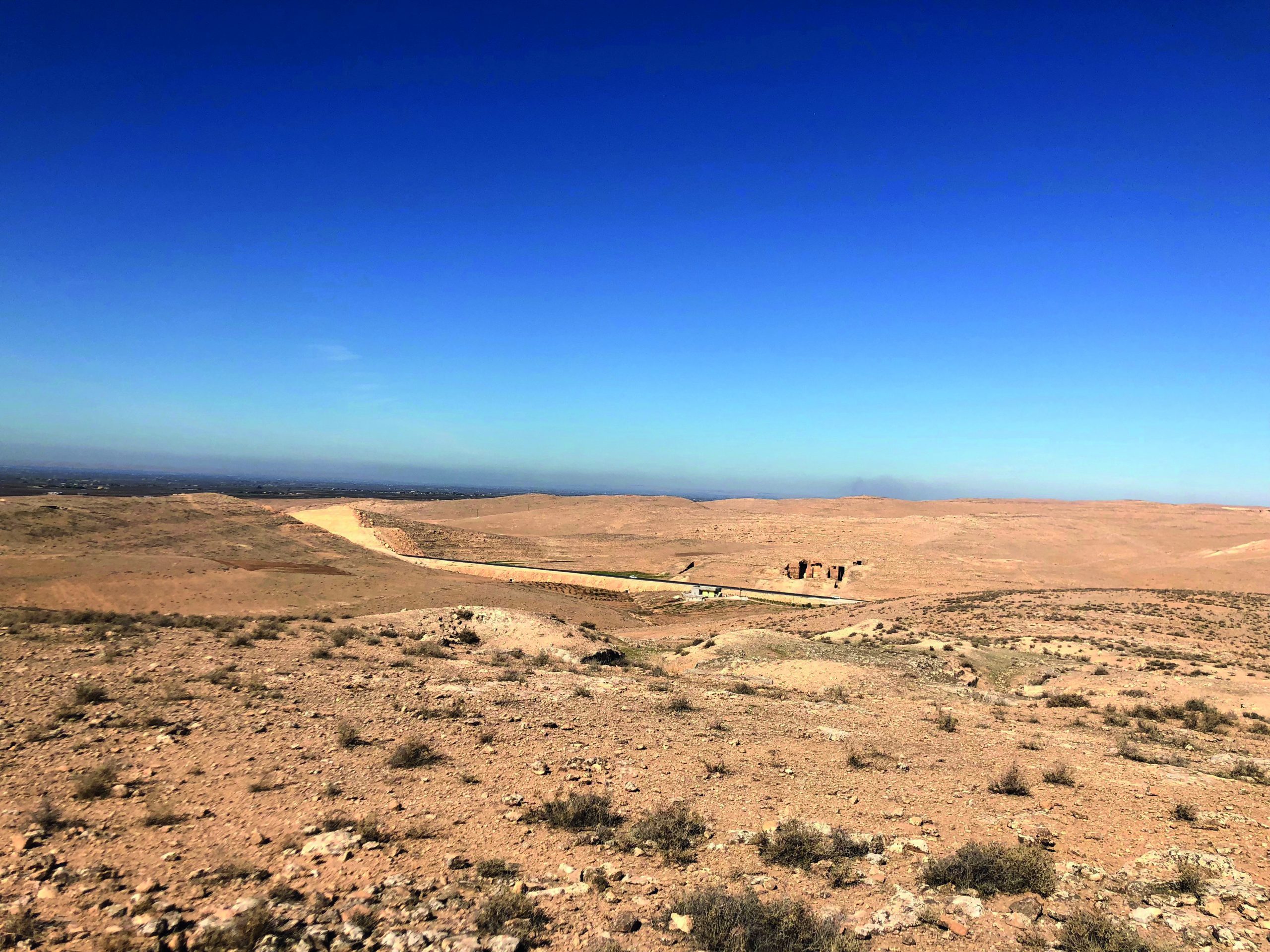In an early, uncorrected proof of her book, Walk Through Walls, Marina Abramovic wrote that Aboriginal Australians look like dinosaurs. Dinosaurs lived about 160 million years longer than the entire span of human evolution, after the first apelike creatures in Africa became bipedal five million years ago. They also set a precedent of worldwide species predominance, not unlike Abramovic, whose Istanbul retrospective, Flux, reaffirms her influence over the globalization of art and her self-promotion as the world’s preeminent performance artist.
Outside the sleek, sloping, manicured landscaping of Sakip Sabanci Museum (SSM), the world-class fine arts institution has the air of an exclusive country club yet admits the public to admire its permanent collections of calligraphy, manuscripts, furniture, sculpture and painting with temporary exhibitions revitalizing historic, international intellectual movements. Abramovic is an adulatory name within a yearly round that has included obscurer subjects like the Russian avant-garde and the early Turkish impressionist Avni Lifij.
But just because it was her inaugural retrospective in Turkey, does not mean that it was Turkey’s first fling with performance art. Performance art and Turkish artists are old friends, meeting, even if erratically, reliably, at least since the 1970s. That, however, was not the stance of Paula Garcia and Serge LeBorgne, the curators of Flux, a touristic Abramovic retrospective with an inspired yet misguided live performance program at SSM, which resumes November 30 to December 20 after Istanbul’s spring outbreak of COVID-19, and its ongoing winter spell.
“MAI [Marina Abramovic Institute] and SSM decided to launch an open call as the best way to connect with local artists and activate the artistic community in Turkey,” Garcia and LeBorgne wrote in collective response to questions of their selection process. “We propose an alternative understanding of the museum as a place of participation and community. This is not important for Turkey alone but it is at the forefront of a global discourse. In this respect our collaboration with the Sakıp Sabancı Museum has been exemplary.”
Did Flux contribute to the development of the local performance art scene or whether involuntary or not, make them invisible through their statement? Their statement reads: “Akış / Flux aims to introduce and support performance art, which is the general term developed in the 1970s to define the non-object, immaterial and time-dependent form of art that is widely performed today as an interdisciplinary social process, encouraging art audiences in Turkey to experience performance art firsthand.”
“MAI and SSM did a lot of work to light the way for performance art in Turkey. 12 artists were selected among hundreds of applicants for the open call. This surprising interest in performance art revealed many potential performance artists in the Turkish art scene,” said Seyhan Musaoğlu, the founding director of Space Debris, and a performance artist and performance art curator with many leading art companies in New York, Boston and Istanbul.
“Looking at the work of many established artists, performance art is a widely spread discipline among Turkish artists’ practices since the 70’s, unfortunately the lack of archives, education and academic interest in the field made it almost invisible.”
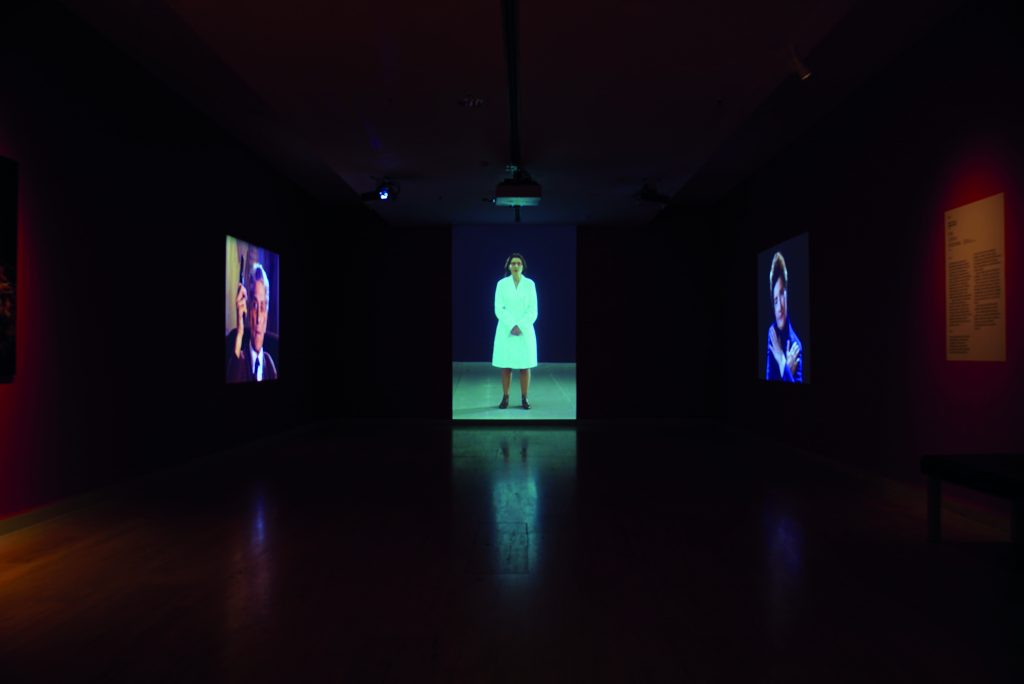
Marina Abramovic Institute (MAI)
The future history of Turkish performance artists
There are many questions to ask. What will be the future of performance in Turkey after Marina Abramovic’s exhibition? What was the past of performance art in Turkey? Flux aims “to explore the legacy of performance art still informing its present.” What legacy will this exhibition leave in Turkey? How will this legacy be maintained? Is this legacy holding performance art back or driving it forward? Did MAI and SSM conduct decent research about performance art in this specific geography and through its culture and history?
As a member of Performistanbul Performance Art Development Association, Musaoğlu spoke with clout: “There is a platform and research space in Istanbul dedicated to live art (performance art), it is even named after the city and the discipline; Performistanbul. “Aiming to provide a platform for performance artists”, the platform curated and realised more than 150 performance projects since its creation in 2016. The platform works closely with emerging performance artists who dedicated their life to performance art. It is with great sadness to notice that none of their work or artists are represented in this exhibition.”
Instead of continuing to work with Performistanbul, the decision that MAI and SSM took to base their live performance program on an open call undermined not only the integrity of contemporary Turkish performance artists living and working today, but faulted on the definition of performance art itself. The inclusion of dancers, actors and musicians arguably muddled critical appreciation for the unique discipline of performance art into a lightweight potpourri of the performing arts.
In 2005, Istanbul’s Beral Madra curated Nezaket Ekici as one of the leading performance artists from Turkey. A student of Abramovic in Germany, Ekici has come to embody the export value of the Abramovic legacy. As one of the artists invited by MAI for Flux, she performed a piece, “Work in Progress – Personal Map”, in which she tied herself to a map tracing her performance history. At SSM she led a lecture performance in which she showed family photos of growing up in Germany and asked the audience to breathe in unison.
“Why are we looking for a word, a title, that is not named performance art, but something else. It has a name already. It has a history,” Ekici said in an interview for Artdog in March. “I would be happy if an actor says, ‘I’m an actor, but I’m working in performance art. I do performances. But my profession is acting.’ [Or,] ‘I’m a musician. I do performances. I do performance art, but my background is a musician. It’s clearer. I have the right to say, ‘I’m a performance artist.’ I studied performance art.”
Abramovic Behind The World Stage
In mid-March, when Flux and SSM grappled with Istanbul’s pandemic closures, ARTnews published a piece by writer Jasmina Tumbas about the Abramovic retrospective in her native Belgrade. “Abramovic got the hometown retrospective that her contemporaries who live and work in Serbia could only dream of,” wrote Tumbas, referring to the cultural elitism that Abramovic enjoyed, remote from most Yugoslav youth, and the controversial reopening of the Museum of Contemporary Art (MSU) in Belgrade in 2017 following national economic crises.
Tumbas critiqued the cult of Abramovic: ”She is never seen in the context of the Belgrade artists who were crucial to her training…What Abramović’s call to young artists misses is that many of them draw on the Yugoslav legacy of collective resistance rather than hagiographies of individual artists…we must face the ways in which art is validated through broad publics: not only by habitual viewers, but by the everyday communities that enable art scenes—and the stars that emerge from them—to thrive.”
Walking through SSM in the midst of Flux, where the ubiquity of Ataturk outside the museum is comparable to the face of Abramovic inside, I stood with the curators to admire the site-unspecific piece, “The Mortal House”, by Maria Stamenkovic Herranz, in which the artist builds a brick labyrinth blindfolded. Garcia, a performance artist from São Paulo, spoke with pride about Brazil’s long history of performance art. LeBorgne responded to a question about the future of performance art mockingly, “it’s like asking what is the future of painting!”
It is a demonstration of cognitive dissonance to hold a stake in shaping the past, while denying participation in the future through multigenerational and intercultural influence, whether through specialized academic training, or public art appreciation. There is a reason why Abramovic targets youth in her work as an artist and educator. Tumbas explained: “It was no surprise that her letter to Serbia was addressed to the youth. Abramović looks forward to a new generation of artists who await her leadership.”
Since the 1970s, when early Turkish performance art emerged in Paris and New York, Abramovic began performing with Ulay (who passed away after Flux opened), changing the course of performance art with works based on remaining in place, enduring embodied space for often lengthy amounts of time, and against various odds. Henri Bergson introduced duration as conscious existence in his 1889, essay, Time and Free Will: “Pure duration is the form which the succession of our conscious states assumes when our ego lets itself live…”
While the prestige of Abramovic, her method, and influence on performance artists around the world is clear, it was an abomination to curate her presence in Turkey with wholesale neglect for Turkish artists’ unique contributions to the history of performance art. Ekici echoed the gospel of Flux, which was to both deny the history of Turkish performance art, while emphasizing its Eurocentric pantheon. A pretentious wall at Flux visualized its heritage from John Cage to Yoko Ono, Nam June Paik to Lygia Clark, and others.
“Be honest. Performance art only began to flourish in real terms in recent years in Turkey. It is new, new, new,” said Ekici, who has participated in at least three residencies in Istanbul since 2005. “But you can not compare to the [performance art] history of Germany, to Spain, to Poland, to other countries with 60, 70, 80 years of performance art. You can not compare. I like that Turkey is working on that, and that’s a good thing because it needs to come there. But it’s really in the beginning. They have no history.”
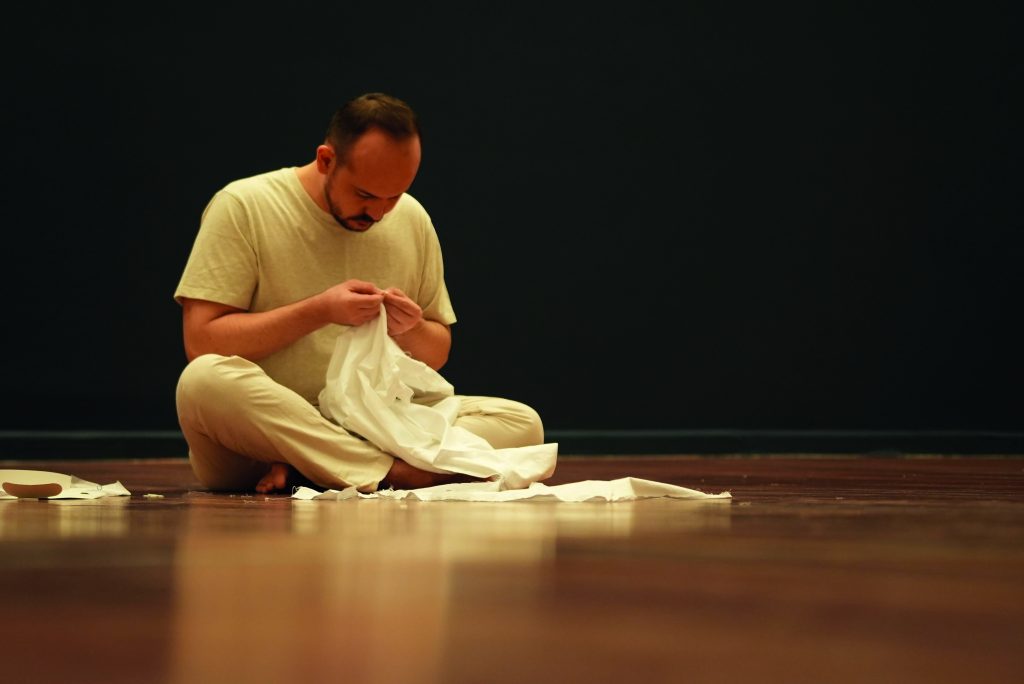
Turkish Performance Art or Performance Art From Turkey
Garcia and LeBorgne invited Şükran Moral, Turkey’s living legend of performance art active mostly during the heady days of the 1990s in Turkey, when cultural liberalism flourished. She declined to participate. For one, she does not practice durational performance. It was an example of an Orientalist approach to see Turkey as terra nullius (literally empty land, a term for British colonialism in Australia), where there are no histories, no people, no artists. For Flux, anything goes in Turkey, meaning any performing artist can be a performance artist.
“From São Paulo, Athens, Bangkok and now in Istanbul, we have been dealing with different political climates in those countries,” Garcia and LeBorgne explained, yet quickly pointed to the absence of performance artists in Turkey, due to political flight. “For example, ‘No Musicians Land’ from Murat Ali, it is a very strong statement of how so many musicians moved to other countries, because of gender issues, political, opportunities, etc. And with this live streaming performance, Murat’s brings back those musicians to their homeland.”
In late 2016, the comprehensive exhibition, “Off the Record”, forwarded retrospective appreciation for the seminal postmodern Turkish artist Nil Yalter, who was born in Cairo in 1938 and later emigrated from her stomping grounds in Istanbul to Paris in 1965. Eda Berkmen curated the show at Arter, including a work, titled, “Deniz Gezmiş” (1972), named after a leftist law student sentenced to death. Yalter made the piece traveling between Paris and Kurtuluş, staying with a friend as Istanbul suffered under martial law following the coup of 1971.
“‘Deniz Gezmiş’ can be thought of as a point of origin. It is the first work where Yalter incorporates text, found materials and performance,” Berkmen wrote in her catalogue essay, “Off the Record”. “Composed of paintings, text, photographs and archived newspapers, the work is a proto-performance, which Yalter describes as ‘an act of presence.’…I reconstruct the artist’s motions in my mind. I wonder whether her shock and disbelief morphed into a sombre acceptance as she kneaded history and emotion.”
Similarly, in New York City, an older Turkish artist from Istanbul named Tosun Bayrak smeared the streets of Manhattan with blood and guts, swaggering with a hardhat while coining Shock Art. Bayrak became an abstract expressionist painter before converting to Islam. His third-person autobiography, “Memoirs of a Moth”, recounts a strain of art history that, like Yalter’s work, could not be categorized, for its multivalent detachment from the social norms of Western cultural historiography. It started with his eviction from a live-in studio in New York.
For his life story, published in 2014, Bayrak wrote of his performance art: “In response to the eviction, Tosun designs a performance piece called Death of a Living Loft, which is announced to the public by street flyers and posters. In preparation, he throws the contents of the loft — including his old paintings, his wife’s sculptures, tables, chairs, plates, pots and pans — into the street. He then digs holes in the walls and ceilings of the loft and fills them with liters of blood, intestines, offals, rats, and squirrels, and finally patches the holes up with plaster.”
Rewriting The Global History of Performance Art
In late February, hosting The Well, a performance piece by Berlin-based Turkish artist Başak Günak, Arter’s performance art curator Selen Ansen refuted the top-down approach of Flux and its Orientalist pretension that Turkey is void of performance art history. She mentioned Yalter, Bayrak, and others. While everyone involved in Flux, including Garcia, LeBorgne, and Ekici, admitted the past existence of individual Turkish performance artists, the idea of their constituting a history remains controversial, despite at least five decades of precedent.
Süreyya Evren, also a curator at Arter, critiques the imposed models of canonization that have come to afflict art historiography in Turkey both from within its core institutions like Istanbul Modern, and from outside, such as the Flux curation at SSM. In his recent essay for a critical series by Istanbul’s art writers for SAHA, he identified and contextualized the 1990s as the earliest emergence of Turkey’s contemporary art scene, when Şükran Moral redefined social norms with her feminist, pro-sex, self-exposing performances.
The publication of Evren’s piece before the reopening of Flux is prescient, as he wrote with characteristic, locally-minded and seasoned insight: “The issue – we could easily call this ‘the issue’ according to the new and effective contemporary art scene – is how to narrate this sceneless era in the past and how to draw a connection between the story of those times and the story of a post-scene era, the very recent past, which is of course an era that would be relatively easier to narrate and historicize.”
In the retrospective phase of Flux, about halfway through the galleries, the curation screened a pivotal Abramovic video. In the 20-plus minutes of “The Onion” (1996), tears flow from the wincing, cringing close-up of Abramovic’s face as she eats a raw onion whole before the camera. The piece followed her personal and professional break with Ulay (as in, The Great Wall Walk (1988/2008), also screened at Flux). The Onion also expressed contempt for the institutional demands of working as an artist.
She wrote notes for “The Onion”: “I’m tired of more and more career decisions, museum and gallery openings, endless receptions, standing around with a glass of plain water, pretending that I’m interested in conversations. I’m so tired of my migraine attacks, lone…” The artist is a figment of individualism in a culture stunned by the anxieties of modern identity, the demands of national citizenry in a world that is increasingly interconnected. Abramovic has always pined for solidarity, whether with Ulay, or as a leader.
The radical individualism of art exists outside of social theory, cultural studies, and the writing of history. These themes tax Slavic, Turkish and other outlying art scenes, yet prompt alternatives to mainstream canonization and disciplinary categorization. Art, however, is not bound to nationality, culture or history. But while globalizing herself as an institution, Abramovic exports her trademarked method of performance art in the name of universal human empathy. Her omnipresence is almost as unsettling to localized art as British colonization is to Australia.







